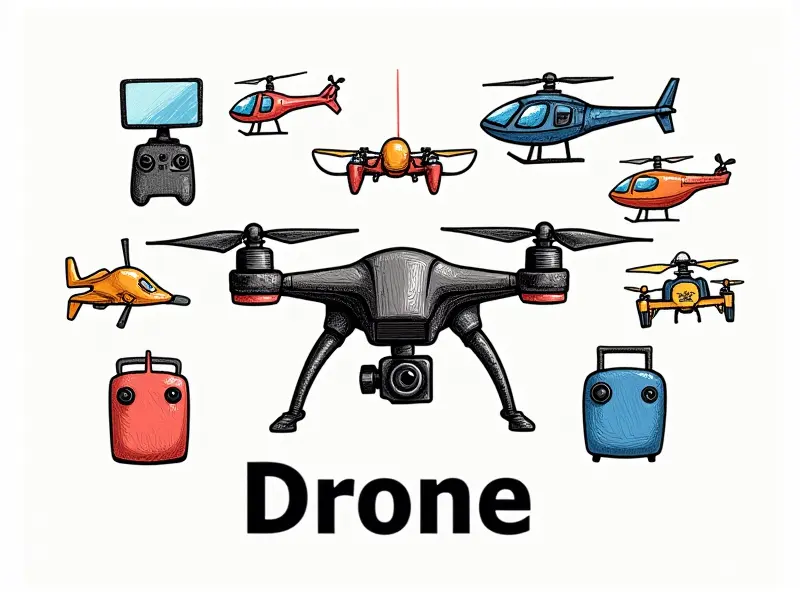How to build a waterproof drone?

Ultimate Guide to Waterproof Drones
Waterproof drones have become increasingly popular among enthusiasts and professionals alike. Whether you're into aerial photography, FPV racing, or simply want a drone that can withstand harsh weather conditions, this guide will provide you with the necessary knowledge to build your own waterproof drone.
This comprehensive article covers all aspects of creating a drone that is resistant to water splashes, rain, and even submersion. From selecting the right materials to sealing components effectively, we'll walk you through each step of the process.
How to Make Your Drone Splashproof
Making your drone splashproof involves several key steps:
- Selecting Appropriate Materials: Opt for waterproof or water-resistant materials such as silicone, rubber, and certain plastics. These materials can withstand moisture without compromising the drone's performance.
- Sealing Electrical Components: Use sealants like silicone caulk to protect sensitive electronics from water damage. Ensure that all openings are properly sealed to prevent water ingress.
- Coating Motors and Propellers: Apply waterproof coatings or wraps to the motors and propellers to enhance their resistance against splashes and rain.
Creating a Weatherproof FPV Drone
To create an FPV drone that can handle various weather conditions, follow these steps:
- Selecting Components: Choose components designed for harsh environments. Look for motors and ESCs with high IP ratings (e.g., IP67).
- Enclosing Electronics: Use waterproof enclosures or custom 3D-printed cases to protect the flight controller, camera, and other critical components.
- Sensor Placement: Strategically position sensors and antennas to minimize water exposure while maintaining optimal performance.
Simple Steps to Waterproof Any Drone
Here are some straightforward steps to waterproof any drone:
- Evaluate the Current Build: Assess your drone's existing components and identify areas that need improvement or replacement.
- Select Appropriate Sealants: Choose from a variety of sealants like silicone, rubber bands, and thermal paste to create watertight seals.
- Apply Protective Coatings: Coat vulnerable parts with waterproofing agents that can withstand long-term exposure to moisture.
Build a Waterproof Drone Step-by-Step
The process of building a waterproof drone involves several stages:
- Material Selection: Choose materials such as aluminum, carbon fiber, and plastic that offer excellent resistance to water.
- Circuit Board Sealing: Apply conformal coatings or potting compounds to the circuit boards for added protection against moisture.
- Motor Protection: Install waterproof covers over motors and ESCs to shield them from splashes and rain.
Tips for Building a Waterproof Drone
Here are some valuable tips to consider when building your waterproof drone:
- Test in Increments: Gradually test the drone’s water resistance by exposing it to increasing levels of moisture.
- Maintain Balance: Ensure that adding waterproofing materials does not affect the drone's balance or performance.
- Use Quality Components: Invest in high-quality, durable components that are designed for harsh conditions.
Protect Your Drone from Splashes
To protect your drone from splashes and light rain, take these measures:
- Apply Silicone Coating: Coat the entire frame with a thin layer of silicone to create a barrier against water.
- Use Protective Covers: Install covers or shields over key components like cameras and sensors to prevent direct exposure to splashes.
DIY Waterproof FPV Racing Drone
If you're looking to build a waterproof FPV racing drone, follow these steps:
- Select High-IP Components: Choose motors and ESCs with high IP ratings to ensure they can handle water exposure.
- Create Custom Enclosures: Design custom enclosures or use 3D-printed parts that fit snugly around electronics, providing a watertight seal.
- Test in Real Conditions: Test your drone under real-world conditions to ensure it can handle unexpected water exposure during races.
Make Your Drone Water Resistant Easily
Making your drone water-resistant is relatively simple if you follow these guidelines:
- Use Waterproof Tape: Wrap waterproof tape around critical components to seal them against moisture.
- Add Protective Coatings: Apply protective coatings or wraps designed for electronic devices to enhance their resistance to water.
How to Seal Drones Against Water
To effectively seal your drone against water, take the following actions:
- Select Proper Sealing Materials: Choose materials like silicone, rubber, and thermal paste that can create a watertight seal.
- Apply Sealants Strategically: Apply sealants to all openings, joints, and connections to prevent water from entering the drone’s interior.
Craft a Waterproof Drone with Ease
With the right approach and materials, crafting a waterproof drone is straightforward. Follow these steps for an easy build:
- Choose Durable Components: Select components that are designed to withstand moisture.
- Create Watertight Enclosures: Design enclosures or use existing ones that fit snugly around electronics.
Conclusion
Building a waterproof drone requires careful planning and the right materials. By following this guide, you can create a drone capable of handling various weather conditions and water exposure. Whether for aerial photography, FPV racing, or simple recreational use, your waterproof drone will provide reliable performance in any environment.

